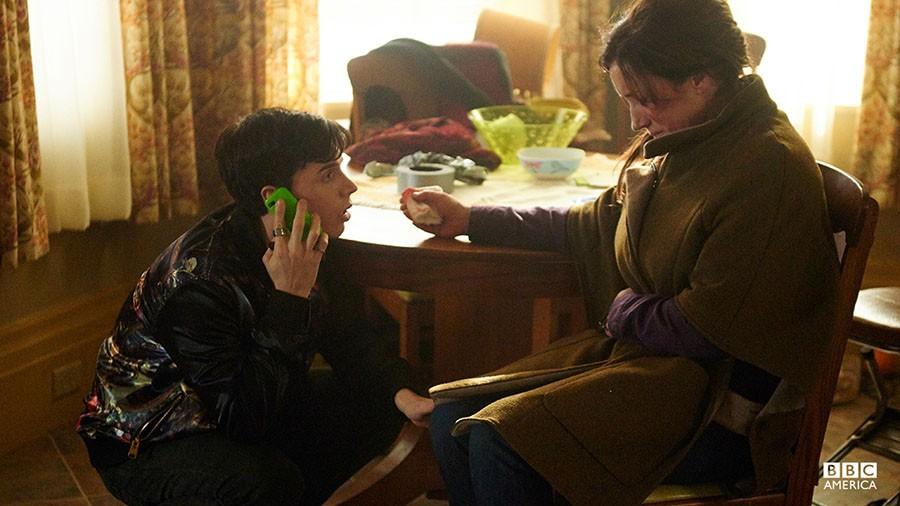“Orphan Black” Season Three Premieres With Stunning Acting and Editing
Since March 30th, 2013, BBC America’s Orphan Black has been captivating viewers with its suspenseful plot centered around clones. Season three premiered on April 18th, exceeding audience’s expectations with the episode titled The Weight of this Combination.
Orphan Black has always been thought-provoking, constantly forcing audiences to re-consider their opinions and tackling real-world controversies such as ethics with genetic experimentation and genetic property. This is achieved by the central plot, a story centered around clones.
Since Orphan Black is centered around clones, video editing can be a tedious job, as with the acting. Orphan Black star Tatiana Maslany has played thirteen clones in the course of the show, non inclusive of all the times one clone has pretended to be another. Six of the thirteen appeared in the season three premiere. Her acting has been nothing short of spectacular; the audience has never failed to differentiate one clone from another, not just based on hairstyles and face contours, but also from their little behaviors, accents and habits.
“It’s fun to play all these different clones,” Maslany said in a NerdHQ conversation. “But it’s also hard. Sometimes, I throw lines at other actors I’m working with in a scene to get them and myself into character.”
Video editing, too, has made the viewing much more enjoyable, throughout the course of the show but especially in the season three premiere. Season three opened up with four clones interacting with each other in the same scene. With the help of the newest technologies, clones are not only able to stand next to each other in the same room, they are capable of touching each other.
According to a behind the scenes video shown at Comic Con, John Fawcett (director) and Graeme Manson (co-director/script writer) revealed that filming is done using a combination of stunt doubles when clones move around and tennis balls on poles when the clones are standing relatively still. A newly-developed motion copying camera allows the crew to capture the same scene twice, once with Maslany as one clone and again as another with the same camera motions. These two separate footages are overlapped with editing software such as Adobe Edge Animate and Photoshop to make it seem as if the clones are physically interacting each other.
“In 2010, we couldn’t even have dreamed of putting two characters in the same frame,” Manson told the Nerdist. “Now, we can put multiple clones in the same screen, and we can make them touch interact physically with each other. A pat on the back or a hug between clones takes hours to edit well. It’s quite a nice deception.”
“I try to explain it to people a lot,” Maslany said in a video interview. “I first play one character with my double just to get the motions right and the whole set up. Then, the camera we use memorizes the motion and we can refilm it again with me being the other clone. We film it a third time with me trying to imitate the actions of the first and second clone without anyone acting it out with me. We end up cutting the videos up in every frame or sometimes in multiple frames at once for the smoothest effect. Most of the time, I end up with my double’s body or her arm but my face on it instead of hers. It’s confusing.”
Overall, Orphan Black has been captivating viewers in the two years it has aired on BBC America. The recent season three premiere has given the audience a stunning show of video editing, acting, and as always, an amazing story.

Jinle Zhu has been writing for The Beachcomber since her freshman year (2014). She has been the features editor and layout editor. She likes Photoshop...










